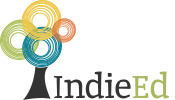Why is it that some of us are voracious readers, often ignoring responsibilities in the pursuit of the story and imaginary worlds, while others are utterly avoidant of words in print and picking up a book?
On the surface, the answer seems simple: Good readers read, and bad readers don’t. But, if you lived into your twenties, then you know how college demands reading and understanding by all students. They most certainly read, and read well, to get the grades they did. Yet, most of my peers no longer read. They can, but don’t.
For me, it all comes down to how we learned in the first place. More importantly, who taught us and in what manner.
We probably all learned to read in one of two main modes:
1) our parents taught us
2) our teachers taught us once in elementary school (because our parents did not or could not)
Which situation is best for stimulating a lifetime love of reading, and which falls short? Which method correlates best with later reading achievement and pleasure?
Parents have a relationship with their children no teacher could ever come close to matching. There is a bond from birth, in which (for the first few years) the child does not separate themselves from the physical bodies and actions of their parents. In a sense, the child’s brain uses the brain of the parents to guide their own behavior and development. So, if they share frequent reading experiences with a parent, then the child is simply more likely to pick up a book on their own; it’s programming they pick up through mere exposure. Monkey see, monkey do. In addition, when you bring a book into the middle of that bond, early, the “book” becomes another member of the family. Simple cognitive dissonance predicts that if the bond is positive between parent and child, the third wheel (the book) that parent introduces into the relationship is also seen as positive. Kids then grow up with a desire to read books as a way to connect to other people. It becomes a positive attachment.
Why can’t teachers bring the same love of reading to children? Because teachers don’t get to help kids develop the pre-reading skills that are huge in developing reading skills later on. Babies through pre-schoolers need lots of auditory, visual, and conceptual experience to train their brains to pay attention to the right things that will underpin the reading process. Development of the reading process comes from early sensory experiences and feedback from our world. Cooing and babbling as a baby, learning to call things names, engaging in musical rhythm and harmony, listening to the rhythm and syntax of spoken language, learning to rhyme, converse, and so on.
These early experiences develop the short term and long-term memory to help one deal with sounds and sound patterns in everyday life and process the meaning within. Teachers have almost no contact with some children until kindergarten or even first grade. By then, their listening and verbal expression skills have been programmed already, by the parents, for better or worse. So, if the parents did not teach the child, the teacher is already playing catch-up. Take into account that a kindergarten or first grade teacher has upwards of 30 students to deal with, and you can understand why a teacher’s impact on reading achievement is much weaker. Children do not receive individual attention like a parent could provide once the student is in the classroom. One-on-one is always the best way for students to learn to read and develop important language skills.
The dynamics of teaching reading in groups and classrooms also can provide stress and anxiety to the students. Especially, if that teacher is under pressure to reach performance benchmarks. That pressure can create a negative learning environment, causing students to feel negatively towards reading, if handled poorly. In addition,the fact that teachers choose one method or another (Phonics versus whole language) forces children to process print in a specific way and rarely teaches the other way. Phonics is often the go-to for elementary teachers. But phonics is only ONE PIECE of the reading puzzle! We use our eyes and our conceptual understandings to read, not just our mouths and ears. Reading is dependant on holistic, cohesive, skill development which integrates auditory, visual, and conceptual processes into one holistic enterprise. By only driving the phonics bus, teachers are ditching the enjoyment of reading in service of one isolated skill. That is not fun. Reading should be fun!
To help your child develop into a motivated reader, share reading experiences with them as often as possible, first. Then, as your child ages, be sure your child receives a multifaceted, holistic, developmental approach to reading–an approach that integrates all aspects of literacy including meaning, phonics, and symbolic memory. With all of these areas of skill communicating and working together, reading becomes pleasurable and an enjoyable option for free time.
Nicolas Clausen is Director of Summit Reading Center and has been delivering complete, holistic reading instruction over the last 12 years.
